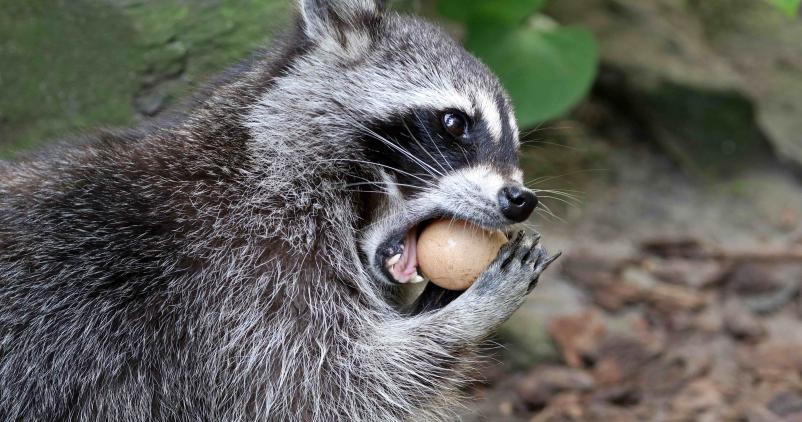Translation Google
First cases of baylisascariasis in raccoons in Belgium
29.07.2024
For the first time in Belgium, intestinal worms of Baylisascaris procyonis have been found in 6 raccoons. This is a parasite that can cause a rare infection in humans, baylisascariasis.
In Germany, the Netherlands, the Grand Duchy of Luxembourg, France, and more recently in Wallonia, raccoons have been identified as carriers of a parasitic disease (intestinal worms) called baylisascariasis.
This disease is not fatal to raccoons, and is transmitted, like other diseases of this type, via the animal's feces. The parasite's eggs can therefore be found in the animal's droppings, on its fur and in its direct environment.
The eggs of these intestinal worms are released into the environment through feces and contaminate animals through ingestion (by accidentally ingesting soil or any material soiled by the feces of infected raccoons).
Once in their new host, the larvae cross the wall of the digestive system and spread via the blood vessels throughout the body: especially the muscles, but also the nervous system and the brain, causing irreversible damage.

Precautionary measures
Contamination in humans is quite rare, but it is advisable to protect oneself against it given the extent of the lesions it can cause (encephalitis (sometimes fatal), eye problems, function of affected organs) and the proliferation of the animal in our territory. The number of individuals in Wallonia is estimated at 75,000 (see distribution below).
Consequently, even if baylisascariasis is a rare zoonosis whose emergence is therefore very recent in our territory and even if cases of infection in humans are rare, it reminds us of the importance of respecting the following preventive measures (in force since the arrival of the animal in Wallonia):
Geographic distribution of the raccoon in Wallonia

First cases of baylisascariasis in raccoons in Belgium
29.07.2024
For the first time in Belgium, intestinal worms of Baylisascaris procyonis have been found in 6 raccoons. This is a parasite that can cause a rare infection in humans, baylisascariasis.
In Germany, the Netherlands, the Grand Duchy of Luxembourg, France, and more recently in Wallonia, raccoons have been identified as carriers of a parasitic disease (intestinal worms) called baylisascariasis.
This disease is not fatal to raccoons, and is transmitted, like other diseases of this type, via the animal's feces. The parasite's eggs can therefore be found in the animal's droppings, on its fur and in its direct environment.
The eggs of these intestinal worms are released into the environment through feces and contaminate animals through ingestion (by accidentally ingesting soil or any material soiled by the feces of infected raccoons).
Once in their new host, the larvae cross the wall of the digestive system and spread via the blood vessels throughout the body: especially the muscles, but also the nervous system and the brain, causing irreversible damage.

Precautionary measures
Contamination in humans is quite rare, but it is advisable to protect oneself against it given the extent of the lesions it can cause (encephalitis (sometimes fatal), eye problems, function of affected organs) and the proliferation of the animal in our territory. The number of individuals in Wallonia is estimated at 75,000 (see distribution below).
Consequently, even if baylisascariasis is a rare zoonosis whose emergence is therefore very recent in our territory and even if cases of infection in humans are rare, it reminds us of the importance of respecting the following preventive measures (in force since the arrival of the animal in Wallonia):
- Do not touch or approach a raccoon, whether alive or sick;
- Absolutely avoid touching or picking up a dead raccoon without waterproof disposable gloves and a protective mask?;
- Do not feed a raccoon, even if it looks harmless?;
- Close sandboxes when not in use?;
- Supervise children to avoid eating soil (they tend to put their hands in their mouths);
- Wash your hands thoroughly after gardening activities;
- Keep dogs on a leash in forest areas, deworm them regularly and pick up their droppings, in accordance with the law;
- Ensure that your pet dog does not touch any live or dead raccoons;
- Pick wild berries more than 50 cm from the ground, systematically wash fruits and vegetables, cook food from fields, forests or gardens potentially accessible to raccoons or foxes.
Geographic distribution of the raccoon in Wallonia


Comment